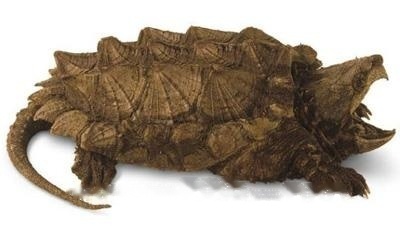
Snapping turtle
Real snapping turtles look like crocodiles fish, Set turtle and crocodile in one, so called true snapping turtle. Its head is relatively thick and cannot be completely retracted in
Origin: Asia
Spot-necked SnakeSnake (Tabby Snake) Rhabdophis tigrina, Rhabdophis tigrina, Rhabdophis tigrina, Rhabdophis tigrina. Commonly known as pheasant neck and so on.
The body length is about 0.8 meters. Weight is generally 200 to 400 grams. There is a distinct neck groove on the nape of the neck, and a pair of thick black patches on both sides of the occiput. The back is emerald green or grass green, with square black spots, bright red between the neck and the black spots at a distance behind; the belly is yellowish green. The lower lip and sides of the neck are white.
The back of the body is emerald green or grass green, with thick black and orange-red patches alternately arranged on both sides of the anterior segment of the body, and a pair of thick black "eight"-shaped patches on both sides of the occiput. Tabby-necked snake is a kind of snake that is widely disputed in the academic circles of our country. Because of its docile personality, many scholars believe that it is a non-venomous snake. In fact, it is a poisonous snake (allergic constitution has a precedent for poisoning death, and it is classified as a poisonous snake in Japan) but it is docile. It is more suitable for primary pets snake breeding.
Chinese name: Tabby-necked trough snake
Latin name: Rhabdophis tigrina
Alternative names: Tabby swimming snake, pheasant neck, pheasant neck, bamboo pole green, Cockscomb snake, pheasant neck
binomial: Rhabdophis tigrinus (Boie, 1826)
Kingdom: Animalia
Phylum: Chordata
Medium in size, about 800 mm in length. The back is emerald green or grass green, and there are thick black patches on the front sides of the trunk. Bright red between the dark spots on the neck and some distance behind; yellowish green on the ventral surface. There is an obvious shallow groove in the middle of the nape, and there are 12 pairs of cervical glands on both sides of the posterior ridge of the parietal squama.
Lives near rivers, lakes, reservoirs, canals, rice fields in mountains, hills, and plains . Feeds on frogs, toads, tadpoles, and small fish, as well as insects , birds, rodents.
The tabby-neck snake is oviparous , spawning between June and July each year, each time more than 10 eggs, there are many up to 47 eggs. The incubation period ranges from 29 to 50 days. Newborn juveniles are 15-17 cm long.